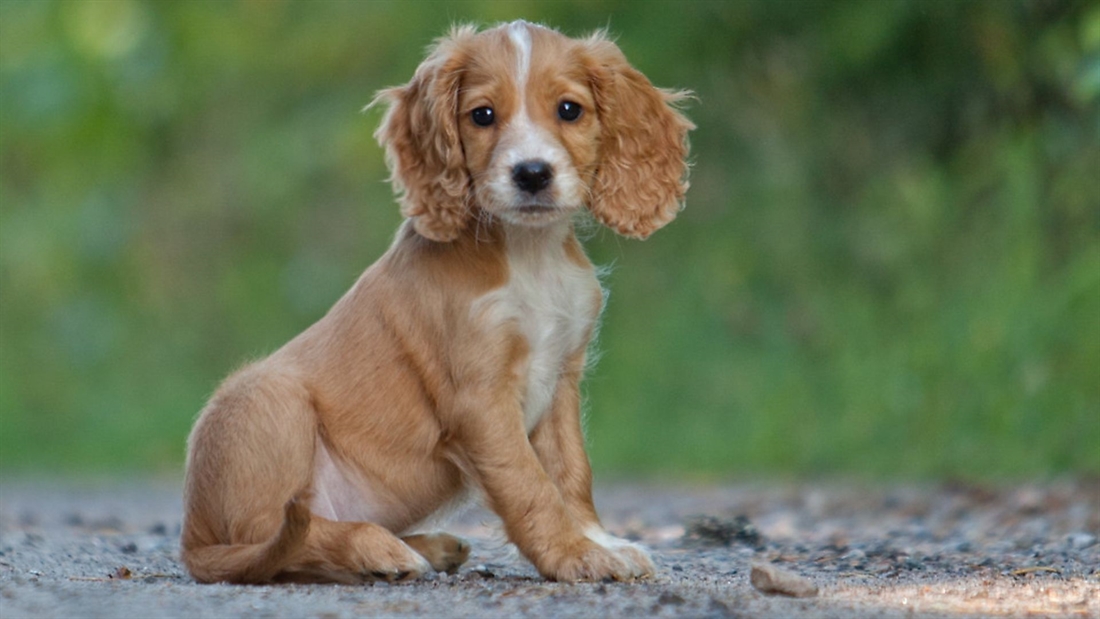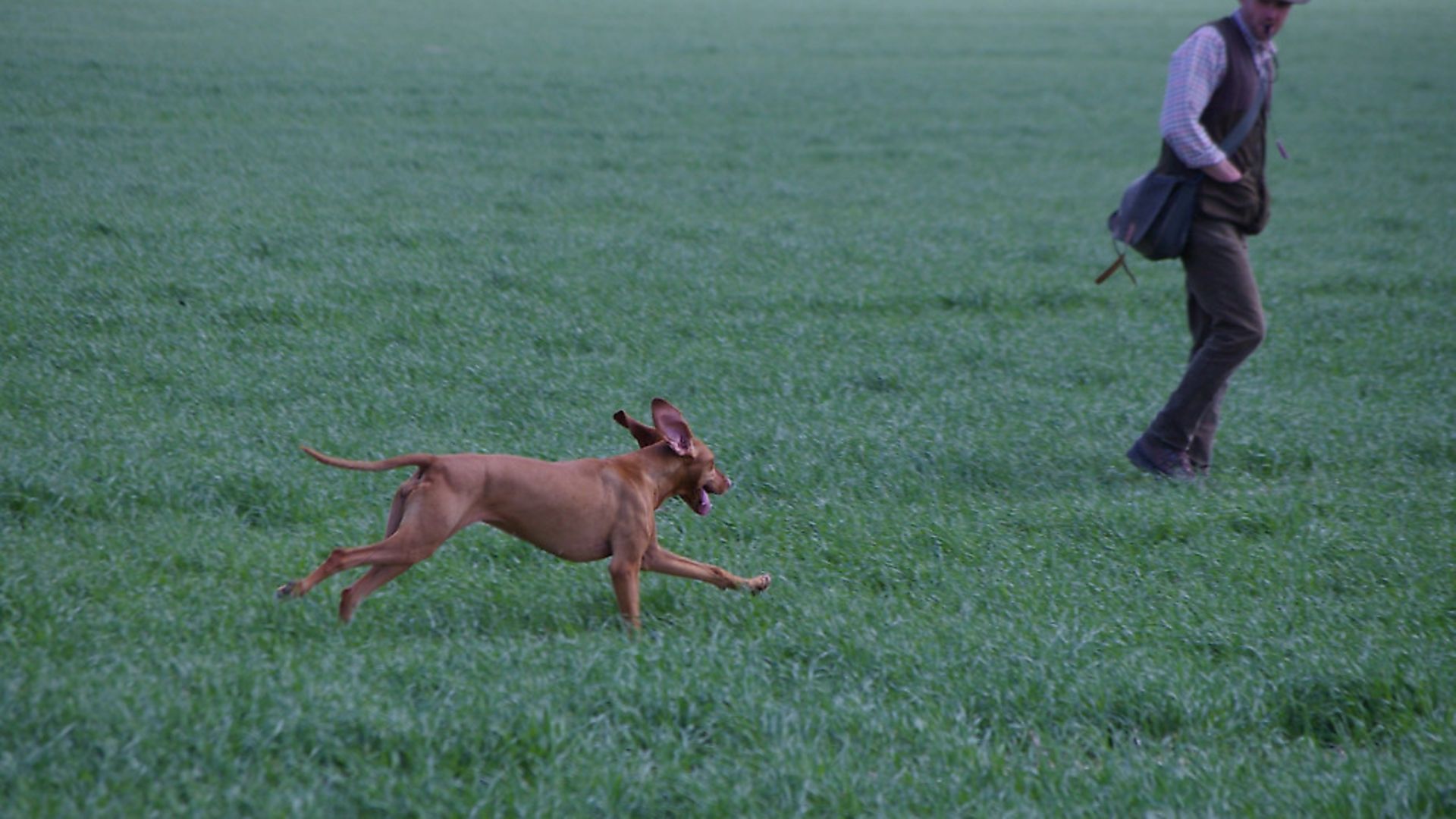What age should you start training your gundog?

Ryan Kay looks at a commonly asked question – what age should I start training my gundog puppy? – and highlights the advantages of starting their training young

At what age do you start to train a dog? It’s one of the most common questions I get asked. There’s a bit of an ‘old-school’ vs ‘modern’ trainer debate going on with this subject, with the former opting for the ‘don’t touch a dog until it’s nine months old’ approach, as opposed to the ‘from the word go’ methodology of the latter.
My father kept Labs and spaniels and all his training was from the old-school club. Hard-handed at times, he talked to them as if they were human (and should understand full sentences from the English language) and considered them basically ready for ‘breaking’ from six to nine months old. This was often the way in the 70s and 80s – he didn’t know any different. And this is still the route for some of that old school today; with an ‘if it works don’t try to fix it’ attitude. Some have ‘progressed’ (depending on your point of view) to more modern-day methods: treat training, clicker training, positive reinforcement training and starting basic obedience from a very early age.
I, for the avoidance of doubt, sit in the modern-day camp! I won’t deny that I was once upon a time influenced by my father’s training methods, as I also knew no different back then, but once I’d witnessed more of the new-school methods, I was totally converted and convinced that this was a better route. I can’t knock the experience of a man who’s been training gundogs for 30 years plus, under the old-school style – and indeed I’m sure things will have moved on again in another 30 years, and some of the methods I use today may be considered outdated – but often the real ‘old dog that you can’t teach new tricks to’ is in fact the human himself!
Some of you will know that I have always encouraged a novice handler to think a little differently and to question what they are doing in relation to gundog training at all times, e.g. why he/she is doing a particular training method or technique, and is that just because it says to do that in the book? What is it teaching their dog? Indeed, does it suit their dog? Will it genuinely assist them in achieving their end goal? Much of it will, but some of it may not, and the ability to sieve through information and apply your own spin at times will enrich your training experience greatly.
So back to the question – when to start? Well, I start from when the puppy comes home. You’ll also notice that our very own Howard Kirby – a man who has been in this game much longer than I have – also starts initial training from puppyhood. Clearly, Howard’s open mind and patience have helped him develop more modern training methods too.
Now, the idea here is to train the young pup without it realising that it’s being trained. The youngster should be having fun, and the trick is that, what are classed as lessons in your mind, should not be so in the pup’s mind – just 30 seconds to a minute here and there. The sit-stay, the heel and the most basic of retrieves can all be encouraged from a very young age. The aim is to bond and gain trust, to engage and instil confidence, and to set the scene for things to come. The focus and biddability that can be achieved at this young age will form the bedrock for future work to be built upon. I regularly have customers turn up with a dog, say, between six and 12 months, having done absolutely nothing, saying that they were told to let the pup be a pup and not to ‘touch’ it until now. Yes, let your pup play and socialise, that’s very important, but it can still learn manners and basic commands, without hindering its puppyhood. So what we usually have with an ‘untouched’ dog that’s reaching adolescence, is a bundle of bad habits that are already inbuilt, which now need ironing out. Plus, a novice handler that needs to try to convince his dog that he’s the main attraction when up until now he’s actually just been the vehicle that’s taken the pup to the park, and is in fact quite unimportant to the pup.
So, to recap, that’s now a novice handler with a novice dog, and habitual bad behaviour. Hmmm, we could have started some time back and not had the last aspect to contend with! An experienced trainer embarking on initial training at this point or age has the advantage of knowing what to do next, and they may well end up with a trained dog. However, the journey will, in my opinion, be a less positive experience for the dog.
For some of the top trialling folk with a drive simply to win, there is most certainly a ‘conveyer belt’ of dogs that need to fit into a particular way of training for them to progress. Soft dogs need not apply! But how many of those soft dogs that have been disregarded could actually have gone the distance to being a great dog, given a different approach or a different way of thinking?! For the majority of us, that ‘disposable’ ethos simply isn’t an option on any level. We could have been dealt a dog with any type of personality, so being able to adapt to that personality and train accordingly is, in my mind, the right way forwards.
An old ethos of some HPR trainers has often been to simply let the young dog run and run. This often preceeds a ‘breaking’ style of training. However, from my view point, the same applies to an HPR puppy too – basic training should start from the word go. By starting from an early age, there’s much less chance of fall outs and stress later on. The idea of gaining that early connection and biddability from an HPR or spaniel from the start is to instil this first and forget about the hunting. Then eventually, given the correct exposure, the hunting should be there, ready to build upon… after all that’s what we’ve bred them for, isn’t it? It’s the reason we select Field Trial champions on a pedigree. I’ll give you an example of success in the HPR world, for folk who do train obedience from an early age. Last year the HPR Championship was won by Adrian Blackledge with his Hungarian Wirehaired Vizsla and he also took second place with another Wirehair. Adrian trains them as I’ve described – from the word go!
I should point out that there are many great trainers in this country that really know how to get the best out of a dog, no matter what its personality or make-up. I do quite like the Initial Puppy Training DVD by Adrian and Caroline Slater (owners of Kipperridge Gundogs) . It focuses on training puppies from 11 weeks to six months old. There’s a tiny bit of the old school in there – with forced fetch on an older puppy (I believe there are better ways to teach the hold) – but many folk will take a great deal away from this DVD, as the emphasis is on creating a bond through early training in a fun and unpressured manner.





